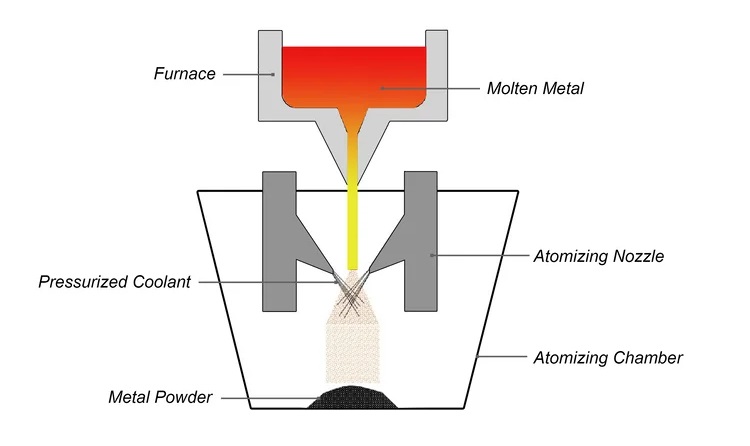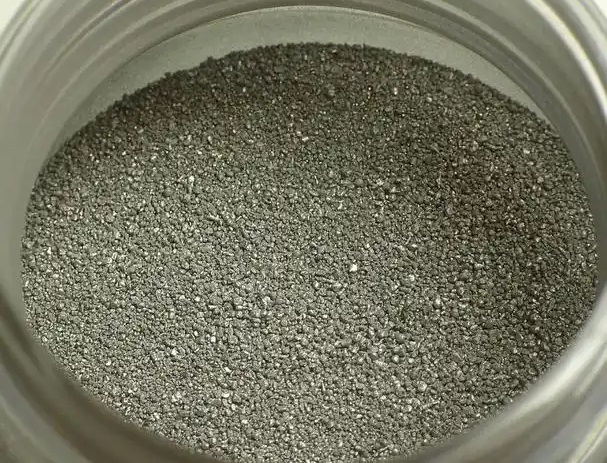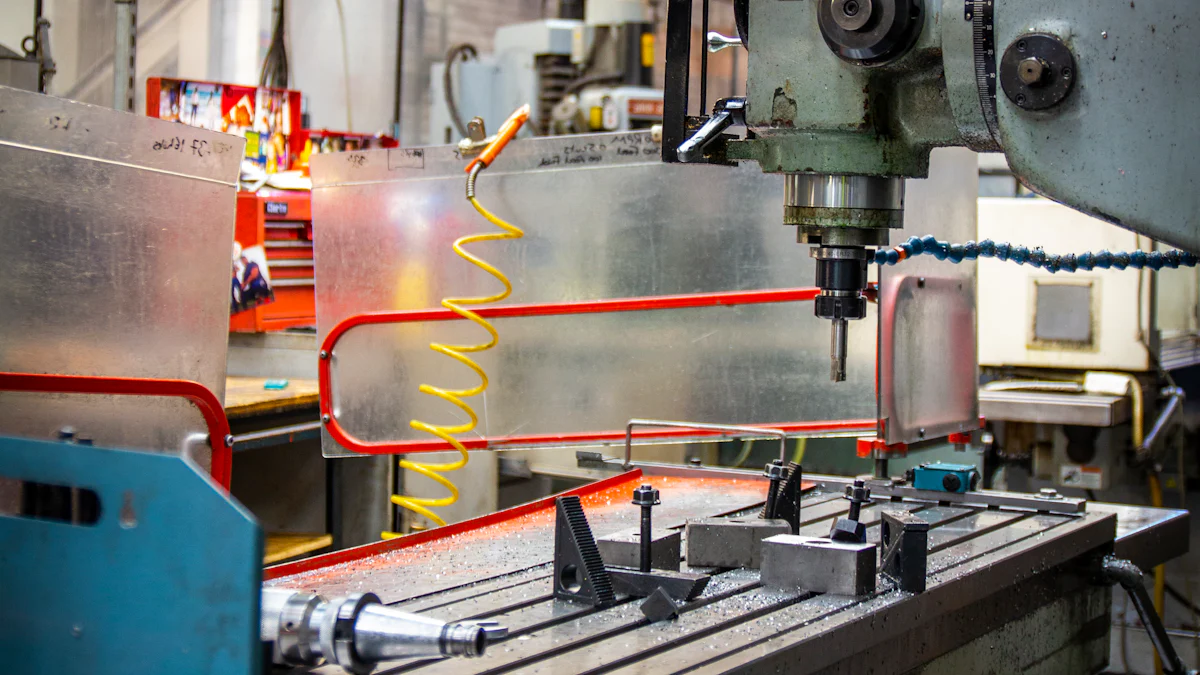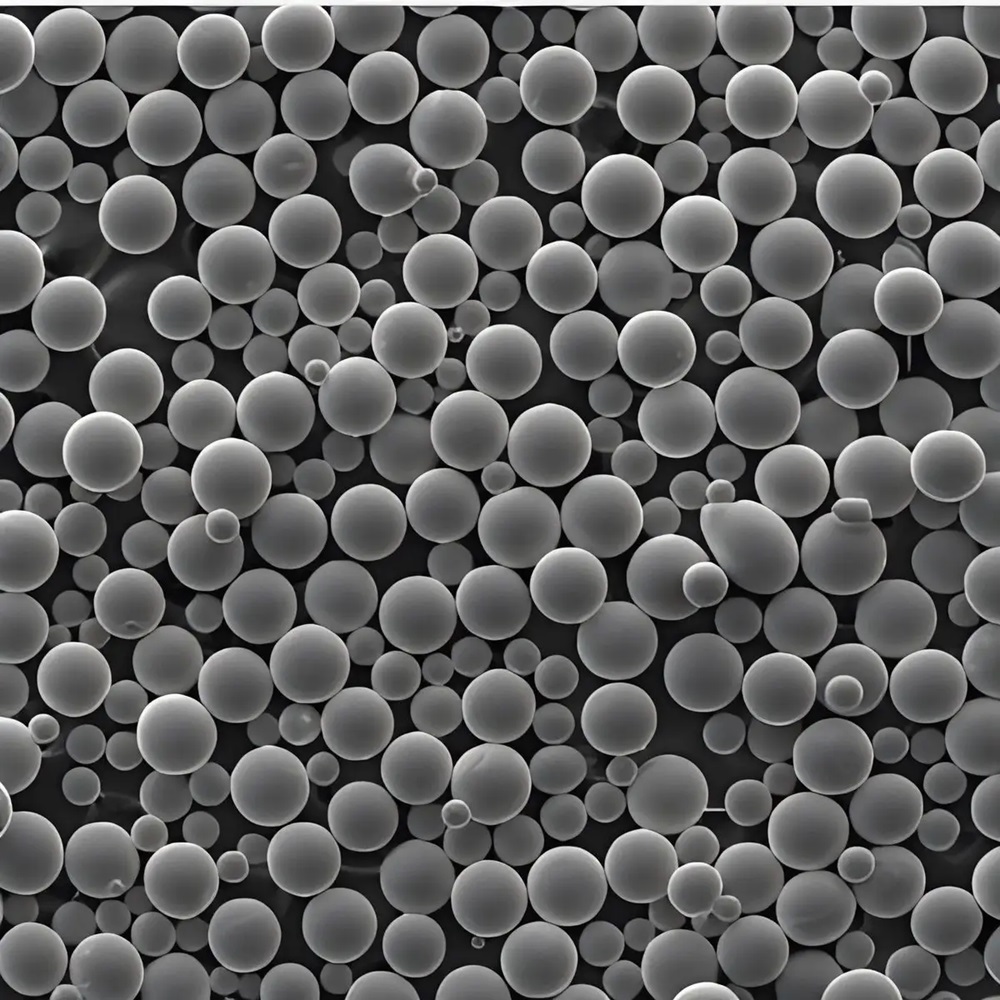Metal powder plays a vital role in modern industries. You can find it in applications ranging from automotive manufacturing to advanced medical devices. The global market for metal powders reached USD 7.52 billion in 2023, with projections estimating it will grow to USD 13.00 billion by 2032. This growth stems from increasing demand for lightweight materials and innovations in additive manufacturing. Industries like aerospace and defense are also driving this expansion, with a 6.0% growth rate in these sectors.
When learning how to make metal powder, you must understand the importance of safety. Many powders are combustible and can form explosive dust clouds when suspended in air. Proper ventilation systems and personal protective equipment, such as respirators and gloves, are essential to minimize risks. Additionally, some powders may react violently with water or air, making careful handling critical.

Methods for How to Make Metal Powder
Mechanical Methods
Mechanical methods involve breaking down metals into powder through physical force. These methods are widely used due to their simplicity and versatility. Milling is one of the most common techniques. You can use ball mills, hammer mills, or jet mills to grind metals into fine particles. Ball milling, for instance, comes in rolling and vibration types, making it suitable for various metals and alloys. Another popular method is atomization, where molten metal is forced through a nozzle to create fine droplets that solidify into powder. Grinding, which uses compressed gas to create collisions, is also effective for producing metal powders. These methods often result in powders with irregular shapes and varying particle sizes, making them ideal for applications requiring diverse material properties.
Physical Methods
Physical methods rely on processes like evaporation and sputtering to produce metal powders. These techniques create spherical powders with controlled sizes, which are essential for industries like electronics and additive manufacturing. Evaporation involves heating the metal until it vaporizes, then condensing it into powder form. Sputtering, on the other hand, uses high-energy particles to eject atoms from a metal target, which then deposit as powder. While these methods require specialized equipment, they offer precise control over particle size and shape, ensuring high-quality results.
Chemical Methods
Chemical methods focus on altering the chemical composition of metals to produce powders. Reduction, electrolysis, and self-propagating high-temperature synthesis (SHS) are common techniques. Reduction involves using a chemical agent to extract metal from its oxide form, resulting in high-purity powder. Electrolysis uses an electric current to deposit metal ions as powder on a cathode. SHS, a more advanced method, relies on exothermic reactions to synthesize powders rapidly. These methods are slower than mechanical or physical techniques but excel in producing powders with exceptional purity and uniformity.
💡 Tip: Mechanical methods are cost-effective and versatile, while physical and chemical methods offer precision and purity. Choose the method that best suits your application.
Common Metals Used in Metal Powder Production
Understanding the types of metals used in metal powder production is crucial for selecting the right material for your application. Each category of metals offers unique properties that cater to specific industrial needs.

Ferrous Metals
Ferrous metals, which contain iron, dominate metal powder production due to their strength and versatility. You will often encounter the following ferrous metals:
- Iron: This metal is widely used in powder metallurgy for applications like automotive parts and magnetic components. Its availability and cost-effectiveness make it a popular choice.
- Steel: Known for its durability and tensile strength, steel powders are ideal for industries requiring robust materials, such as construction and manufacturing.
Ferrous metal powders excel in applications where magnetic properties and high strength are essential. However, they are heavier and less resistant to corrosion compared to non-ferrous options.
Non-Ferrous Metals
Non-ferrous metals offer distinct advantages that make them indispensable in various industries. These metals are:
- Non-magnetic, which is essential for electronic and aerospace applications.
- Lightweight, reducing the overall weight of components.
- Resistant to rust and corrosion, ensuring longevity in harsh environments.
For example, copper powders are perfect for water-related applications due to their excellent corrosion resistance. Non-ferrous powders are commonly used in aircraft, automotive, and marine industries, where weight and durability are critical factors.
Specialty Alloys
Specialty alloys combine multiple metals to achieve superior properties for advanced applications. These alloys are used in industries like aerospace, medical, and additive manufacturing. Below is a table highlighting some key specialty alloys and their applications:
| Alloy Type | Key Alloys | Applications |
|---|---|---|
| Nickel alloys | Inconel, Monel, Hastelloy | Aerospace, chemical plants |
| Cobalt alloys | Stellite, Haynes | Cutting tools, biomedical |
| Tool steels | H13, M2, M4 | Cutting tools, molds |
| Stainless steels | 316L, 17-4PH, 420 | Implants, marine hardware |
| Titanium alloys | Ti-6Al-4V, Ti-6Al-7Nb | Aerospace, medical |
| Aluminum alloys | 6061, 7075, 2024 | Automotive, aerospace |
| Copper alloys | Brass, bronze | Electrical contacts, bearings |
Specialty alloys like titanium and nickel-based powders are essential for high-performance applications, offering exceptional strength, corrosion resistance, and heat tolerance.
By understanding these metal categories, you can make informed decisions about the materials best suited for your needs. Whether you’re exploring how to make metal powder for automotive parts or advanced medical devices, selecting the right metal is key to achieving optimal results.
Applications of Metal Powders

Manufacturing and 3D Printing
Metal powders have revolutionized manufacturing, especially in 3D printing. These powders serve as the primary raw material for creating intricate and durable components. Various 3D printing technologies, such as laser sintering and bound metal extrusion, utilize metal powders to fuse layers into solid parts.
- High-quality powders ensure precision and strength in the final product.
- Commonly used metals include aluminum, titanium, stainless steel, and nickel alloys. Precious metals like gold and silver are also employed for specialized applications.
- Compared to traditional manufacturing, metal 3D printing minimizes material waste. Up to 97% of unused powder can be recycled, making it an eco-friendly option.
🛠️ Pro Tip: Metal 3D printing allows you to design and produce complex parts within hours, significantly reducing lead times and costs.
Electronics and Conductive Materials
Metal powders play a critical role in electronics due to their excellent conductivity and thermal properties. Copper powders, for instance, are widely used in electronic components like printed circuits and conductive adhesives.
- Copper and silver powders are essential for creating multilayer ceramic capacitors and thermal interface materials.
- Ferrite powders are used in inductors and transformer cores, ensuring efficient energy transfer.
- Alloys like Cupro-Nickel and brass are preferred for wiring and connectors due to their durability and conductivity.
These powders enable the production of high-performance electronic devices, meeting the demands of modern technology.
Medical and Pharmaceutical Uses
In the medical field, metal powders contribute to the development of advanced implants and devices. Titanium and cobalt-based powders are particularly valued for their mechanical strength and biocompatibility.
- Titanium powders are non-toxic and integrate seamlessly with human tissue, making them ideal for implants.
- Cobalt-based powders resist corrosion, ensuring the longevity of medical devices.
- Metal Injection Molding (MIM) technology allows for the creation of customized implants with minimal material waste.
- Copper powders, known for their antibacterial properties, help reduce infection risks in medical applications.
💡 Did You Know? Metal powders enable the production of complex, tailored implants that improve patient outcomes while reducing manufacturing costs.
By understanding these applications, you can see how metal powders drive innovation across industries. Whether you’re exploring how to make metal powder for 3D printing or medical devices, their versatility and efficiency make them indispensable.
Properties of Metal Powders

Particle Size and Shape
The particle size and shape of metal powders significantly influence their performance in various applications. Smaller particle sizes enhance densification and packing density, making them ideal for processes like sintering. Ultrafine powders, especially those below 10 microns, improve reactivity and sintering behavior. However, they may require careful handling due to their higher surface area and potential for agglomeration.
The shape of the particles also plays a critical role. Spherical particles flow more efficiently, ensuring uniformity during processes like 3D printing. In contrast, irregularly shaped particles can hinder flowability, leading to inconsistencies in the final product. A wider particle size distribution can improve packing density but may reduce flowability, which is crucial for applications requiring precise material deposition.
🛠️ Pro Tip: Use spherical powders for applications like additive manufacturing to achieve better flow and uniformity.
Purity and Composition
The purity of metal powders determines their suitability for specific industries. High-purity powders minimize impurities that could compromise the performance of the final product. For example, electronics and medical devices often require ultra-high-purity powders to ensure reliability and safety.
| Metal Powder | Purity Grade | Applications |
|---|---|---|
| Aluminum Powder | 99.9% (High Purity) | Industrial applications |
| Copper Powder | 99.99% (Ultra High) | Electronics, electrical uses |
| Titanium Powder | 99.5% (High Purity) | Aerospace, medical devices |
| Silver Powder | 99.99% (Ultra High) | Electronics, optics |
| Gold Powder | 99.99% (Ultra High) | Electronics, jewelry |
For industries like aerospace and medical, powders such as titanium and nickel must meet stringent purity standards. JHMIM ensures that its powders meet or exceed these requirements, providing reliable materials for critical applications.
Flowability and Density
Flowability and density are essential properties that impact the usability of metal powders in manufacturing. Powders with high flowability ensure consistent feeding in processes like 3D printing and metal injection molding. Bulk density, on the other hand, determines the packing density of printed layers and molded parts.
- Optimal particle size distribution enhances interparticle contact, reducing voids and improving packing density.
- Higher bulk density correlates with greater density in the final product, while low packing density can lead to porosity and surface defects.
- Testing methods like the Hall flow rate test and shear cell measurements classify powders based on their flowability.
💡 Did You Know? JHMIM’s metal powders are engineered to achieve optimal flowability and density, ensuring superior performance in manufacturing processes.
By understanding these properties, you can select the right metal powder for your application, ensuring efficiency and high-quality results.
Safety Measures for Handling Metal Powders
Handling metal powders requires strict adherence to safety protocols to protect both workers and the environment. By following proper storage guidelines, using personal protective equipment (PPE), and implementing fire prevention measures, you can minimize risks and ensure safe operations.
Proper Storage Guidelines
Storing metal powders correctly is essential to maintain their quality and prevent accidents. Follow these best practices to ensure safety:
- Store powders in a dry, well-ventilated area to reduce moisture absorption.
- Keep the storage area free from ignition sources, such as open flames or electrical sparks.
- Use sealed containers to transport powders and minimize exposure to air and humidity.
- Monitor temperature and humidity levels regularly to prevent oxidation.
- Label and segregate powders clearly to avoid cross-contamination.
💡 Tip: JHMIM recommends maintaining a controlled environment with regulated humidity and temperature to preserve powder integrity.
Personal Protective Equipment (PPE)
Using the right PPE protects you from potential health hazards when handling metal powders. Equip yourself with the following:
- Gloves: Prevent direct skin contact with powders.
- Safety Glasses: Shield your eyes from airborne particles.
- Respiratory Protection: Use masks or respirators to avoid inhaling fine powders.
🛡️ Pro Tip: Always inspect your PPE for damage before use to ensure maximum protection.
Fire and Explosion Prevention
Metal powders, especially those with fine particles, can pose fire and explosion risks. Implement these measures to enhance safety:
- Identify combustible dust materials and high-risk areas in your facility.
- Train employees on hazards and emergency procedures.
- Conduct regular cleaning to eliminate dust accumulation.
- Use cleaning methods that minimize dust clouds, such as vacuum systems.
- Control ignition sources by grounding equipment and avoiding static buildup.
- Install explosion protection devices in high-risk zones.
🔥 Did You Know? NFPA 484 provides comprehensive guidelines to minimize fire and explosion risks associated with metal powders. JHMIM ensures compliance with these standards to prioritize safety.
By following these safety measures, you can create a secure working environment while maintaining the quality of your metal powders. JHMIM’s expertise in metal powder production ensures that our materials meet the highest safety and quality standards.
Producing metal powder requires diverse methods tailored to specific materials and applications. You must understand the properties and uses of these powders to achieve optimal results in your projects. Always prioritize safety by following proper handling and storage protocols. JHMIM ensures high-quality metal powders, helping you meet industry standards with confidence.
FAQ
What is the best method to produce high-purity metal powders?
Chemical methods, such as reduction and electrolysis, excel in producing high-purity powders. JHMIM specializes in delivering ultra-pure powders for critical applications like aerospace and medical devices.
How do you choose the right metal powder for your application?
Consider factors like particle size, shape, purity, and flowability. JHMIM offers expert guidance to help you select powders tailored to your specific needs.
Are metal powders recyclable in manufacturing processes?
Yes, most metal powders are recyclable. For example, up to 97% of unused powder in 3D printing can be reused. JHMIM ensures sustainable solutions for your projects.
